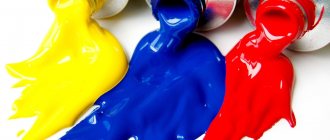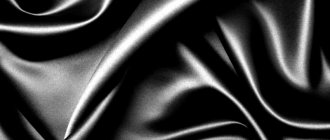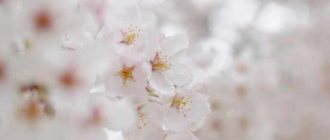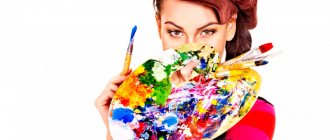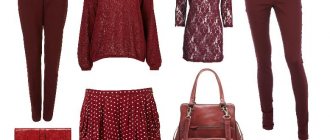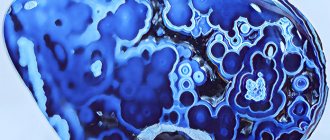Every day, color surrounds every person everywhere, evoking unique feelings and emotions. The choice of interior and household items, accessories, improvised means, clothing, and everything else according to the shades of the color palette indicates the personal preferences, internal sensations and state of mind of the individual. Also, personal preferences for colors characterize the mood of the upcoming event or temperament.
The choice of color tone radically affects the psycho-intellectual state of the individual. Psychologists have determined that an environment with a restrained color scheme attracts, calms, promotes a creative atmosphere, and improves communication between people. Color tone can influence feelings, not logic. Studies have proven that 80% of color is “absorbed” by the nervous system, and 20% by vision. There is a certain relationship between color and perception. It has been truly established that every color tone has subconscious associations. Color, like shape, has an emotional impact on any personality. It can instill feelings of comfort and peace, attract or repel, disturb or excite. This can be clearly observed when leafing through booklets, watching good advertising films or looking at posters, glancing at the expressive spatial and color solutions.
Rainbow psychology
As children, we all rejoiced at the appearance of a rainbow in the sky after the rain. Everyone tried to memorize the number and sequence of colors of the rainbow. Who among us does not remember such funny phrases as:
- Every
Hunter
Wants
to
Know
Where
the
Pheasant
Goes . _ _ _ _ - How
once
Jak
- Zanar
Head
broke
the
Lantern
. _ _
_ _ - And other options.
Where the first letters of the words mean the corresponding color name:
- Each
one is red; - O
hunter - orange; - Wants
- yellow; - Know
- green; - Gde
- blue; - S
goes - blue; - Azan
- purple.
But we didn’t even think at that time that each color influences us, our character and our life to one degree or another. And now, having already become adults, we can trace the psychological connection of a certain color we prefer with one or another trait of our character.
Red color in psychology
Since ancient times, people have shown a special interest in the color red.
In many languages, the same word means the color red and, in general, everything beautiful and beautiful. Among the Polynesians, the word "red" is synonymous with the word "beloved." In China, a sincere, frank person is said to have a “red heart,” while the heart of a bad, treacherous person is black. Red is exciting, hot, activating, associated with danger and aggression. Reds can easily attract attention to any advertisement. Your pulse and blood pressure may increase if you look at red for too long. Red tires quickly.
The meaning of red in psychology
People who prefer red love to be leaders.
Almost all their senses are at their maximum. They are persistent and do not like to put things off. It often happens that those who prefer red are demonstrative and selfish, intolerant, stubborn and cruel. A woman in red is most often inclined to flirt with guys. The color red also denotes power and greatness. In Byzantium, only the empress had the right to wear red boots. The emperor signed in purple ink and sat on a purple throne. For many peoples, the color red symbolizes the south, flame and heat.
Aggressive colors - red, red-orange.
How did the protective color of the fabric come about?
The creator of clothing made from swamp-colored fabric is considered to be the Indian tailor Khaki, after whom the camouflage colors were named. He was the first to sew uniforms for English soldiers from material the color of swamp mud.
According to historical documents, the khaki uniform was custom-made by the English Major Hudson, who was fond of drawing before the army. In 1848 he commanded a battalion of scouts in India. At that time, soldiers wore red uniforms. Naturally, uniforms of this color were an excellent target for bandits and enemies. Even from a great distance it was easy to see the soldiers in red uniforms.
A major with creative abilities solved this problem with a non-standard solution - he dressed the soldiers in nondescript costumes, completely invisible against the background of nature. Since the tailor who made this uniform was named Khaki, they decided to name the unusual color in his honor.
Such changes in the battalion benefited Major Hudson, and he quickly rose to the rank of general.
But, unfortunately, the authorities did not support the idea of dressing up the army, and Hudson was dismissed for violating traditions.
Pink color in psychology
Pink is a soft color that dulls the emotions of anger and aggression.
In places where children with antisocial behavior are corrected, pink walls or furniture are often used. If after a hard day you come home angry and aggressive, look at something pink and your aggression will disappear. Pink can mean goodness, passion, romance, love. Those who prefer pink want to live life to the fullest, desire new experiences, are hardworking and do not like to rest. But sometimes people who prefer pink can be frivolous, childish, and love to show off in front of everyone.
The meaning of pink in psychology
Pink is the color of life, of all living things. He talks about the need to love and be kinder. Those who like him can become agitated over the most insignificant things. For people who are overly pragmatic, this color causes irritation.
What is protective color
This is the general name for flowers that merge with the landscape, nature, and surrounding objects. Objects painted in a protective color remain unnoticed in certain environments.
In some cases, security color refers to the bright color of the entire object or its individual parts, which conveys certain information to the security observer.
Orange color in psychology
If you're in a bad mood, look for something orange.
Orange will certainly lift your mood, especially if it's winter outside. In winter, everyone enjoys orange even more than in summer, due to the lack of sun. It’s hard to imagine effective advertising without orange.
The meaning of orange in psychology
People who prefer orange are creative individuals.
They are strong, freedom-loving, and forgive everyone. They have inexhaustible energy that needs to be released, for example, by creating another masterpiece. Orange lovers may have a high opinion of themselves. Orange is the favorite color of intuitive people and passionate dreamers. In heraldry, this color also means hypocrisy and pretense.
Fashion for protective paint
For half a century, khaki suits were worn exclusively by military personnel. And only in the early 60s, artist Andrew Warhol wore “dirty” colored clothes to an official reception, which shocked the public. After this, khaki suits began to gain mass popularity among ordinary citizens.
Fashion designers have even created a clothing style with “dirty” colors and a loose cut, known to fashionistas as “safari”. He gained great popularity not only among men. Recently, military-style clothing has become increasingly worn by women.
The most interesting thing is that this style has remained relevant for many years. Even this year, famous designers have developed entire collections of khaki outfits.
To keep up with fashion, men and women buy trousers and shirts in camouflage colors and sew exclusive clothes in camouflage colors to order.
In the fashion industry, khaki fabric is mainly used for suits, trousers and jackets. Very often, camouflage-colored material is used to create tourist equipment.
Yellow color in psychology
Yellow is the color of gold, which since ancient times has been perceived as a frozen solar color.
This is the color of autumn, the color of ripe ears and fading leaves, but also the color of illness, death, the other world. Among many nations, women preferred yellow clothes. Often the color yellow served as a distinctive feature of noble persons and upper classes. For example, Mongolian lamas wear yellow clothes with a red belt.
On the other hand, among some Asian peoples, yellow is the color of mourning, grief, and sadness. In Europe, a yellow or yellow-black flag meant quarantine, and a yellow cross meant plague. Among the Slavic peoples, yellow is considered the color of jealousy and betrayal, and in Tibet jealousy is literally called “yellow eye.” Let us also remember the “yellow press” and the “yellow house”
The meaning of yellow in psychology
Yellow stimulates the brain and nervous system.
Yellow is joy, warmth and faith in the best. The combination of black letters on a yellow background is the most advantageous for the most effective advertising, as it contributes to better memorization of the text. But don't overdo it with yellow, as it can overstimulate the brain and cause anxiety. People who love the color yellow want to reveal themselves, to achieve the goal they have set for themselves. They are self-confident, joyful and cheerful. These people often have a high level of creativity. Yellow helps them in difficult times and concentrates their attention. Sometimes they like to gossip, or just chat, and are also often absent-minded and critical of themselves and others, but at the same time their self-esteem is not at all low, but on the contrary.
Green color in psychology
Green is a natural, calming and relaxing color.
Green has healing properties and normalizes high blood pressure. People who choose green choose their life path clearly and rationally. They approach any task in life with all seriousness. They love to help others. Their inner world is rich, but they are in no hurry to open it, even though they themselves are not secretive.
The meaning of green in psychology
Green is the color of grass and leaves.
For many peoples, it symbolizes youth, hope, fun, although sometimes it also symbolizes immaturity and lack of perfection. Green color is extremely material and has a calming effect, but it can also produce a depressing impression (it is no coincidence that melancholy is called “green”, and the person himself “turns green” with anger). The people of Iran associate the color green both with rapid growth and freshness, and with misfortune, sadness, sorrow, which is why they say “green leg” about an ill-fated person, and “green house” about a cemetery. In medieval Europe, jesters wore green and yellow clothes, and bankrupts in Germany had to wear green hats.
Our summer is winter, only painted green. Heinrich Heine
Symbolism of chestnut color
There are beautiful people and ugly people. As for skin color, these are just quirks of nature, that's all. Daniel Pennac, "The Little Prose Trader"
A symbol of earth, wood, simplicity, a return to traditions of vital energy. It invigorates and facilitates communication. But be careful: if you wear too much chestnut, you risk creating an impression of despondency, apathy, and banality (the color can be associated with peasant work, army camouflage). Therefore, it is better to combine it with a different shade - for the sake of more liveliness of your image.
Blue color in psychology
For many peoples, the color blue symbolizes heaven and eternity.
It can also symbolize kindness, fidelity, constancy, favor, and in heraldry it denotes chastity, honesty, good reputation and fidelity. "Blue blood" speaks of noble birth; The English call a true Protestant a “blue.” In addition, the color blue is close to black and receives similar symbolic meanings. It was considered mourning in Ancient Egypt and among some peoples of South Africa. The French call horror “blue fear” (remember the fairy tale about “blue beard”. Among the Slavic peoples, blue served as the color of sadness, grief, and was associated with the demonic world. Ancient legends describe black and blue demons.
Symbolism of gray
A moderate color, between black and white, everything and nothing. Gray matter is the brain. “Exercise your gray matter” in colloquial language means to think. “Gray life” is a life without bright events. The color embodies passivity. It is a symbol of respect, indifference, modesty, indecisiveness and neutrality.
In professional life, it reflects seriousness and efficiency when combined with the other. If you wear only gray, it will evoke sadness, fear, the approach of death, cold, monotony, and make you think about worse times. A person wearing gray is, as it were, erased in his own shadow: gray and shadow are identified.
Blue color in psychology
If you want to inspire confidence in someone, wear blue clothes.
Blue will not only inspire confidence, but also respect for your person, and will also emphasize your high social status and show others that you are prone to stability. Water and ice blue soothes and cools. Heart rate becomes lower. If you want to motivate your employees to work efficiently, paint your office walls blue. This will help not only office staff to work productively, but also weightlifters to exercise more effectively. It has been proven that in rooms with blue walls, athletes' performance increases.
Purple color in psychology
Purple is a dangerous color.
It puts pressure on the psyche and causes apathy. At the same time, purple color increases low self-esteem. People who love the color purple are unusual - not like everyone else. It is difficult for them to realize themselves in life, they are usually very self-critical, and always control themselves very rationally.
The meaning of purple in psychology
The color violet also symbolizes the inherent infantility and suggestibility of a person, the need for support and support. In this sense, the choice or denial of the color purple acts as a kind of indicator of mental and sexual maturity.
Yellow
Yellow, just like orange, is the color of the sun. Perfect for a talisman for those people who decide to move to northern latitudes. It will reduce the longing for warmth and help you adapt more easily.
In addition, this shade is a symbol of creativity and intelligence. Helps to gain inspiration and desire for new knowledge.
An amulet containing yellow color is suitable:
- students;
- scientists;
- actors;
- for those who begin to practice magic.
Is a talisman against:
- witchcraft;
- evil eye;
- love spells;
- sorcery;
- envy;
- bad thoughts.
In addition, it is believed that yellow color can fight:
- apathy;
- anxiety;
- uncertainty.
Lilac color in psychology
What does the color lilac mean in human psychology?
Lilac color is one of the shades of purple, as well as a mixture of blue and red colors (a mixture of feminine and masculine principles), means a bright future. Blue in this shade gives a certain chill, which also gives the meaning of nostalgia, and red - creativity.
Therefore, if we speak succinctly about the color lilac, then it means a clear future, nostalgia and creativity. This description is often found in teenagers who are full of energy, but at times experience depression, and they also have a long way to go.
The meaning of lilac color in psychology
Also, as the results of various studies have shown, the color lilac improves a person’s self-esteem.
Therefore, people with a low indicator are recommended to wear lilac tones or jewelry. The color lilac in human psychology is vanity and immaturity. This color is often chosen during adolescence.
Lilac color in the psychology of women
If the lilac color is loved by the female gender, this means that she has a creative inclination or the ability to fantasize and imagine well.
It is also generally accepted that such girls like to cheat themselves, while experiencing severe stress and depression. On the other hand, such representatives of the fair sex are cautious and have a desire for harmony and aesthetics. Usually, a love of color leads to a matching color wardrobe. But it is worth remembering that everything is good in moderation, you should not overdo it, since an excess of this shade can cause disgust from the people around you.
Color perception disorder
About 8% of men and only 0.5% of women suffer from color blindness. What is color blindness associated with? There are three types of cones in our eyes: L-cones are responsible for recognizing long (red) waves, M-cones recognize medium (green) waves, and S-cones recognize short (blue) waves. L- and M-cone defects are called red-green color blindness. S-cone defects are extremely rare. If a person has impaired perception of red color, then for him such light will look like green.
Black color in psychology
Black color in psychology, as a rule, symbolizes misfortune, grief, mourning, and death.
Thus, in ancient Mexico, during the ritual sacrifice of a person, the face and hands of the priests were painted black. Black eyes are still considered dangerous and envious. Ominous characters are always dressed in black, whose appearance portends death. Black color is authoritarian.
If we see a man or woman in black, or a black car, then subconsciously they become more significant for us. This is probably why the limousines of rich and wealthy gentlemen who want to appear authoritarian are black, like their clothes. The color black denotes not only authority and weightiness, but also aggressiveness. There is such an interesting fact: football referees more often punish the team that has a black uniform with penalties, as well as yellow and red cards.
People who prefer black are mysteries. They want to unconsciously attract the attention of others, since black is a curious color because it hides something interesting and scary behind it. If you wear only black, then this may indicate that you are missing something essential in your life. Thus, you protect yourself from unpleasant reality and try to hide. It's better to get out of this state. But this must be done slowly, gradually changing the attributes of black clothing to other bright colors.
The meaning of black color in psychology
It is believed that there is a connection between the color black and sexual attractiveness.
Among some African tribes, women with very black skin are highly valued as lovers, but not as wives. Love passion is shrouded in darkness and mystery; therefore, black can symbolize something intimate and passionately desired. Among the Arabs, the expression “blackness of the eyes” means beloved, “blackness of the heart” means love. Thus, black can also have a favorable meaning. It is perceived this way, for example, in the arid regions of Africa, where there is little water and black clouds promise fertility and abundance. Black bulls, goats or birds are sacrificed to the guardian spirits who send rain, and the priests also dress in black.
Gray color in psychology
In psychology, gray is a neutral color. It's rare to meet someone who loves gray, and just as rare to meet someone who can't stand gray. Gray does not distract from important matters, which is why business people prefer it. At the same time, gray is quite friendly and reliable.
The meaning of gray in psychology
Usually those who prefer gray put reason first, not emotions. Gray clothing gives strength to insecure individuals.
Brown
Brown is associated with earth, wood and stone. It's a completely neutral color - and it's warm. Brown can mean reliability, consistency and down-to-earthness. Sometimes he is considered boring.
In design, brown is usually used as a background color. It can sometimes be found in woody or rocky textures. Brown carries a feeling of warmth and integrity. Sometimes dark shades of brown replace black, both in backgrounds and in typography.
Examples:
The gray-brown background gives the site reliability and responsibility.
Thanks to the orange-brown color, it creates a feeling of earthiness and reliability.
The dark brown background makes the site look solid and grounded, and the bright colors stand out even more.
Brown is often used in wood textures, and in this minimalist site, warm brown creates a friendly feel.
The taupe background brings stability and earthiness to the design.
White color in psychology
White color in psychology symbolizes purity, spotlessness, innocence, loyalty, virtue, joy.
It is associated with daylight, as well as with the productive force, which is embodied in milk and eggs. Associated with whiteness is the idea of the obvious, the conventional, the legitimate, the true. All hospital workers wear white coats, most likely because the color white has an association with cleanliness. White color in psychology symbolizes completeness and perfection, freedom of opportunity and the removal of any barriers. This color also symbolizes purity in religion. In addition to all this, white is a symbol of equality, because it is in it that all colors are combined.
The meaning of white color in psychology
People who prefer white are ready to devote themselves completely to their work, but at the same time they can be hard to touch.
Sometimes they can isolate themselves from everyone around them and the surrounding affairs, become disappointed in everything, and become detached and bored all day long. Sometimes they are open to the whole world, they can easily sense a lie, and just as easily reveal the truth of a complex problem. However, white can also have the opposite meaning. By its nature, it seems to absorb, neutralize all other colors and correlates with emptiness, incorporeality, icy silence and, ultimately, with death. The Slavs dressed the dead in white clothes and covered them with a white shroud.
It is customary among some tribes in Africa and Australia to paint the body with white paint after the death of someone close to them. In China and some other countries in Asia and Africa, white is the color of mourning. In the old days, white mourning was also used by the Slavs.
Explaining to someone why the condom was white, Ranevskaya said: “Because white makes you look fat.” Faina Georgievna Ranevskaya
Applying masking colors
Khaki color of different shades is widely used in the military field. Thus, it is customary to paint all military equipment and equipment with a protective color. Tents, backpacks, and various fabric household items that soldiers use in the field are also made from swamp-colored material.
In fact, khaki color is used to paint all objects and objects that are used by the military. This coloring allows soldiers to be unnoticed in different areas and easily move in the right directions. The khaki color background practically blends with nature. And in such conditions, it is very difficult even for a professional to recognize a military man.
According to studies conducted in many countries around the world even before World War II, the protective “dirty” color makes it extremely difficult to visually distinguish an object in almost any terrain. Only on the untouched snow cover are the soldiers more noticeable. In this case, additional camouflage and a change of clothing to lighter colors are required.
In the modern world, protective paints are used not only in the military industry. Khaki color has found its place in many areas where camouflage from human and animal eyes is needed. Thus, swamp-colored clothing is very popular among researchers, archaeologists and tourists. Such a nondescript robe does not attract unnecessary attention from others and makes it easy to hide to observe nature.
Psychology of color and human character: relationships
Each person gives preference to one color, at least no more than two or three (depending on where these colors are used - in clothing, furnishings, car color, etc.).
The pleasant or unpleasant feeling that a particular color evokes can change over time. But in any case, the color you prefer can tell a lot about your character and emotional makeup. Psychologists in such cases use a color test developed by Swiss psychologist Max Lüscher in the late 1940s. The Luscher test, used by professional psychologists, requires special training for its use. The “lighter” version of the Luscher test can be easily tested by anyone, using the usual settings of a modern color TV. Psychologists say: if the color red predominates, then the owner of the TV is trusting, but overly emotional and aggressive. If yellow stands out clearly, then such a person inspires confidence in others, is an optimist and expresses friendliness. But the constant smile on his face is most often a mask behind which hides strong internal tension. The predominant blue-green color indicates that the person is timid and weak, but dangerous if someone gets in his way. And finally, those who prefer light blue are accommodating, lazy and do not know moderation in food and drink.
An experienced observer may also be able to provide additional information about a person by their preferred color of car. As proof of this, we can cite data from the American psychologist Berthold Schwartz, who claims that the color of a car can be used to judge some of the psychological characteristics of its owner. Thus, the owners of red and yellow cars are optimists, lovers of life and consider themselves happy. Green ones are worn by nature lovers and realists. Blue is chosen by people with a balanced character. Owners of white cars adhere to conservative views, while business people drive black ones. Gray and silver ones are to the taste of proud people, and brown ones are preferred by respectable spouses and fathers of large families.
How does color affect a person and his life?
Many seriously underestimate the influence of color on a person’s well-being and mood. At times, color can influence the occurrence of certain reactions, which subsequently directly affect important decisions. For example, color can affect a person’s blood pressure and appetite, without him even noticing it.
Remember what feelings you often experience on a cloudy and damp day, looking out of the window and getting ready to leave the apartment. Seeing the grayness behind the glass, you probably feel a significant deterioration in your mood. Positive energy seems to disappear somewhere and the world around begins to evoke unpleasant emotions. It’s unlikely that you have thought that the reason for all these bad moods is precisely the perception of color.
Some time ago, medicine began to pay closer attention to such a phenomenon as color therapy. What is the essence of this technique? Color is used as one of the ways to influence the emotional, mental and even physical state of the patient. The basis of the technique was the wavelength of each color - it turned out that each length has a specific effect on the human body.
By the way, color as one of the aspects of treatment has been used since the existence of ancient civilizations. For example, in ancient Egypt, special rooms were allocated in temples in which the refraction of sunlight took place - this subsequently influenced the appearance of different colors of the spectrum. The person seemed to be bathed in bright colors, and this technique even got its name - “Ra-therapy”. Today, this unusual treatment method has been replaced by chromotherapy, a science that studies how certain colors affect human health.
The meaning of colors in psychology - table
Below is a brief description and meaning of primary colors in personality psychology. Based on the preference for one color or another, everyone can independently draw a conclusion about their psychological characteristics. Table 1 - The meaning of colors in psychology (briefly)
| Color | Color meaning |
| Red | The color of passions. If this is your favorite color, then such a person is brave, he is a strong-willed, domineering type, quick-tempered and sociable. Moreover, he is an altruist. People who are irritated by this color have an inferiority complex, fear of quarrels, a tendency towards solitude, stability in relationships. The red color symbolizes excitement and energy. This color is also a symbol of eroticism. Disgust and ignoring red reflects organic weakness, physical or mental exhaustion. Prisoners of war, forced to live for years in life-threatening conditions, were especially likely to reject him. Red is the color most preferred by teenagers. |
| Yellow | Symbolizes calmness, ease in relationships with people, intelligence. Being loved means being sociable, curious, courageous, adaptable, and enjoying the opportunity to please and attract people. When he is unpleasant, then we are talking about a concentrated, pessimistic person with whom it is difficult to establish an acquaintance. Yellow comes from mixing green and red and is the color of energy. The greatest preference for yellow is given to pregnant women expecting a successful outcome of childbirth, as well as people who are prone to changing places. Yellow is also interpreted as the color of illumination (halo/aura of Christ or Buddha). |
| Green | The color of nature, nature, life itself, spring. The one who prefers it is afraid of other people's influence, looking for a way to assert himself, since this is vitally important for him. Anyone who does not love him is afraid of everyday problems, the vicissitudes of fate, in general, all difficulties. The color green contains hidden potential energy and reflects the degree of volitional tension, therefore people who prefer green strive for self-confidence and confidence in general. Eccentric people, who achieve their goals not through targeted volitional activity, but through emotions, reject green as an unattractive color. Along with them, green color is rejected by people who are on the verge of mental and physical exhaustion. |
| Blue | The color of the sky, peace, relaxation. If you like him, then this speaks of modesty and melancholy; such a person often needs to rest, he gets tired quickly, a sense of confidence and the goodwill of others is extremely important to him. The rejection of this color reveals a person who wants to give the impression that he can do anything in the world. But, in essence, he is a model of uncertainty and isolation. Indifference to this color speaks of a certain frivolity in the field of feelings, although hidden under the guise of courtesy. In short, choosing blue as the most preferred color reflects a person's physiological and psychological need for peace, and denying it means that a person avoids relaxation. When you are sick or overworked, the need for blue increases. |
| Brown | The color of individuals standing firmly and confidently on their feet. People who have a soft spot for him value traditions and family. The preference for brown reflects, first of all, the desire for simple instinctive experiences, primitive sensual joys. At the same time, the choice of this color as the most preferred also indicates a certain physical exhaustion. Normally, along with black, brown is the color most often rejected by people. |
| Black | The color of uncertainty, symbolizing a gloomy perception of life. Anyone who prefers to dress in black often perceives life in dark colors, is unconfident, unhappy, and prone to depression, because he has no doubt that his ideals in life are unattainable. Frequently changing a black suit or dress to another, brighter, catchier one, indicates that pessimistic moods often dissipate. The constant choice of black indicates the presence of a certain crisis state and characterizes aggressive rejection of the world or oneself (remember the black banners of anarchists). Children who are acutely experiencing a lack of care and love often use black shading in their drawings. Normally, black is generally rejected. |
| Grey | The favorite color of sensible and distrustful people who think for a long time before making any decision. It is also a neutral color favored by those who are afraid to make a statement too loudly. If you don’t like this color, then this is an indicator of an impulsive, frivolous character. Often, gray color is also preferable in case of severe overwork as a barrier, fencing off the irritants of the outside world. In situations of psychological testing, this color is used as a means of protection against the penetration of another into the inner world of the subject. A study of about two thousand young men in a situation of competitive examinations for vacant positions showed that the color gray was put in first place by 27% of the examinees, instead of the usual 5% in a normal situation. |
| White | A synthesis of all colors, which is why it is the “ideal” color. It contains a significant meaning, since it simultaneously conveys the brilliance of light and the coldness of ice. This color can be preferred by a person with any character; it does not repel anyone. |


